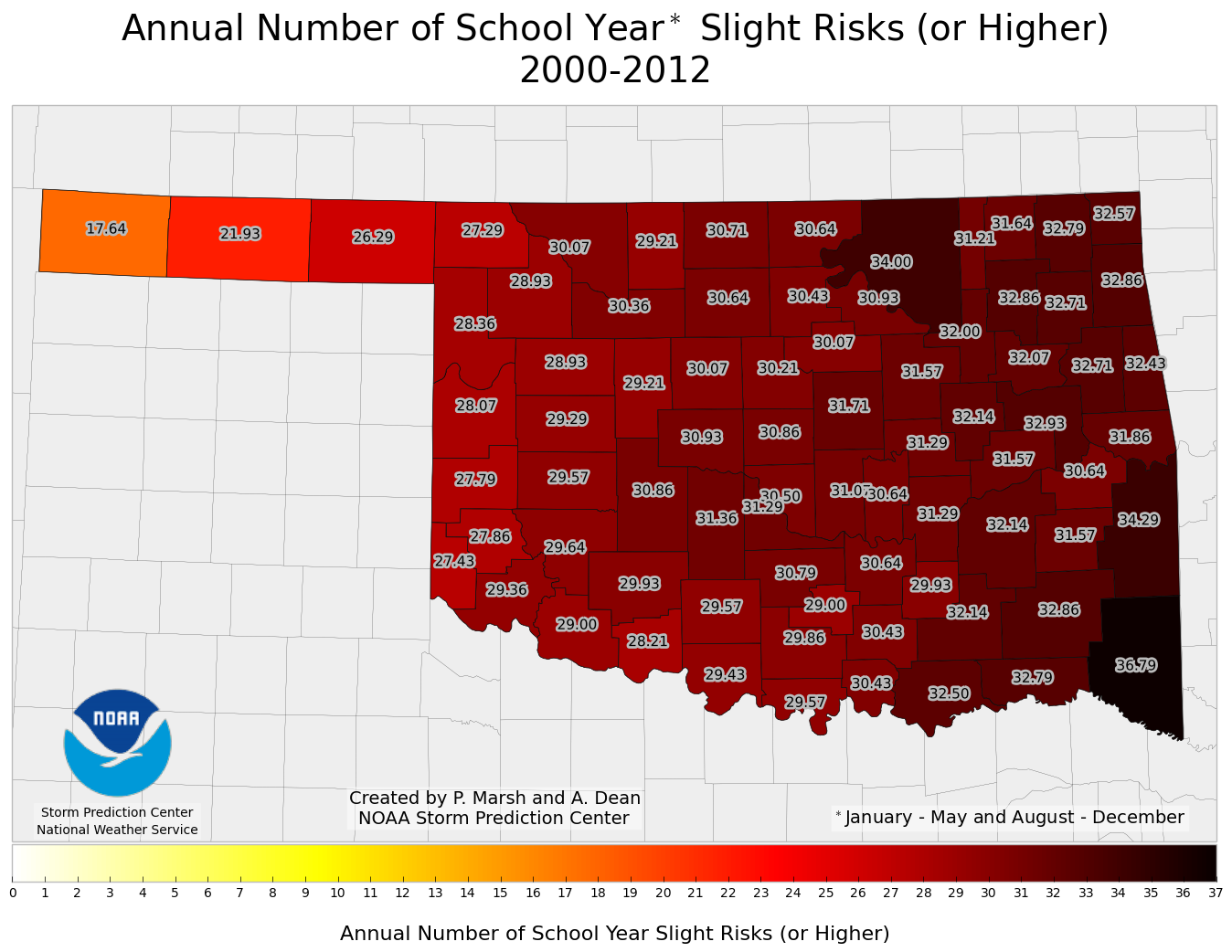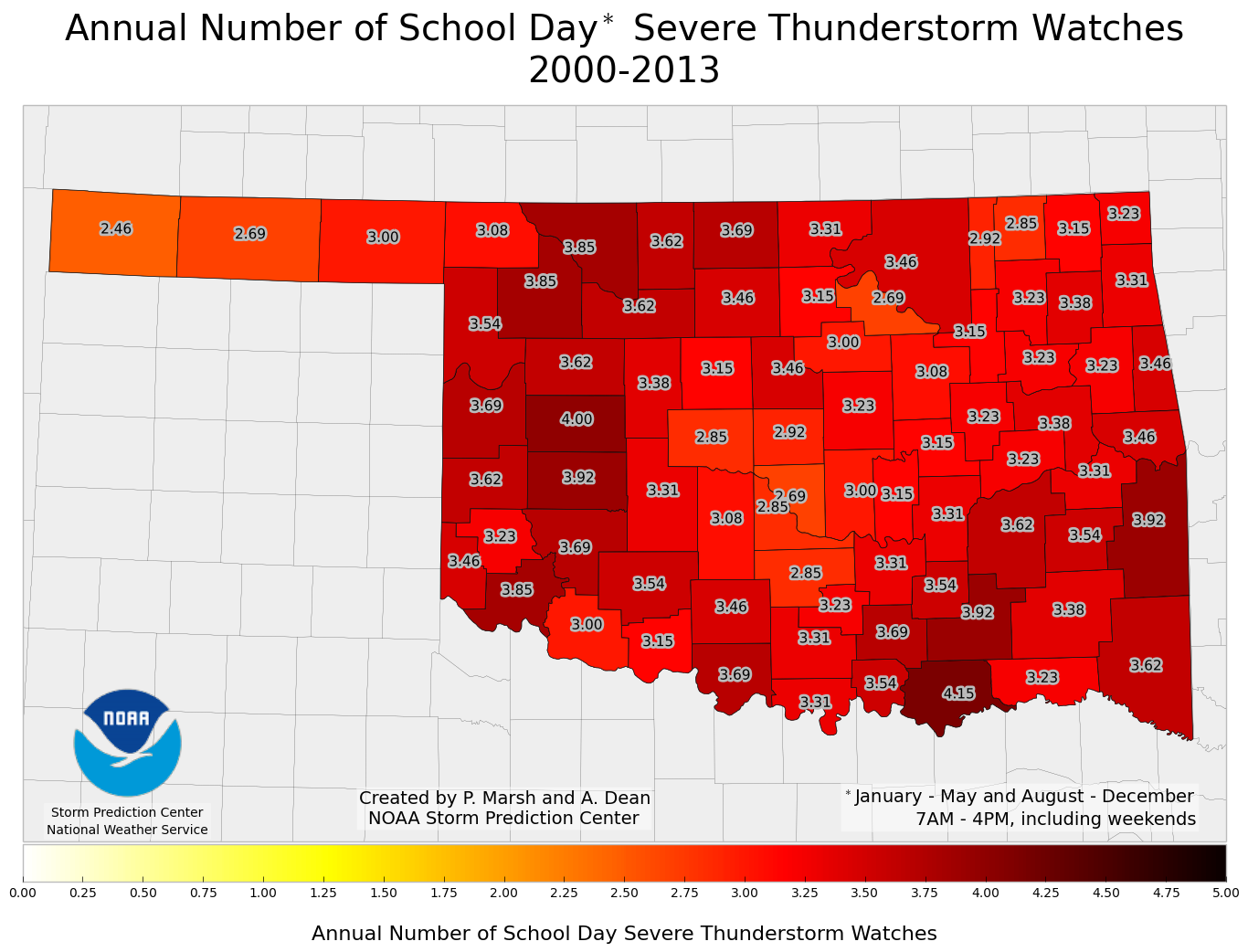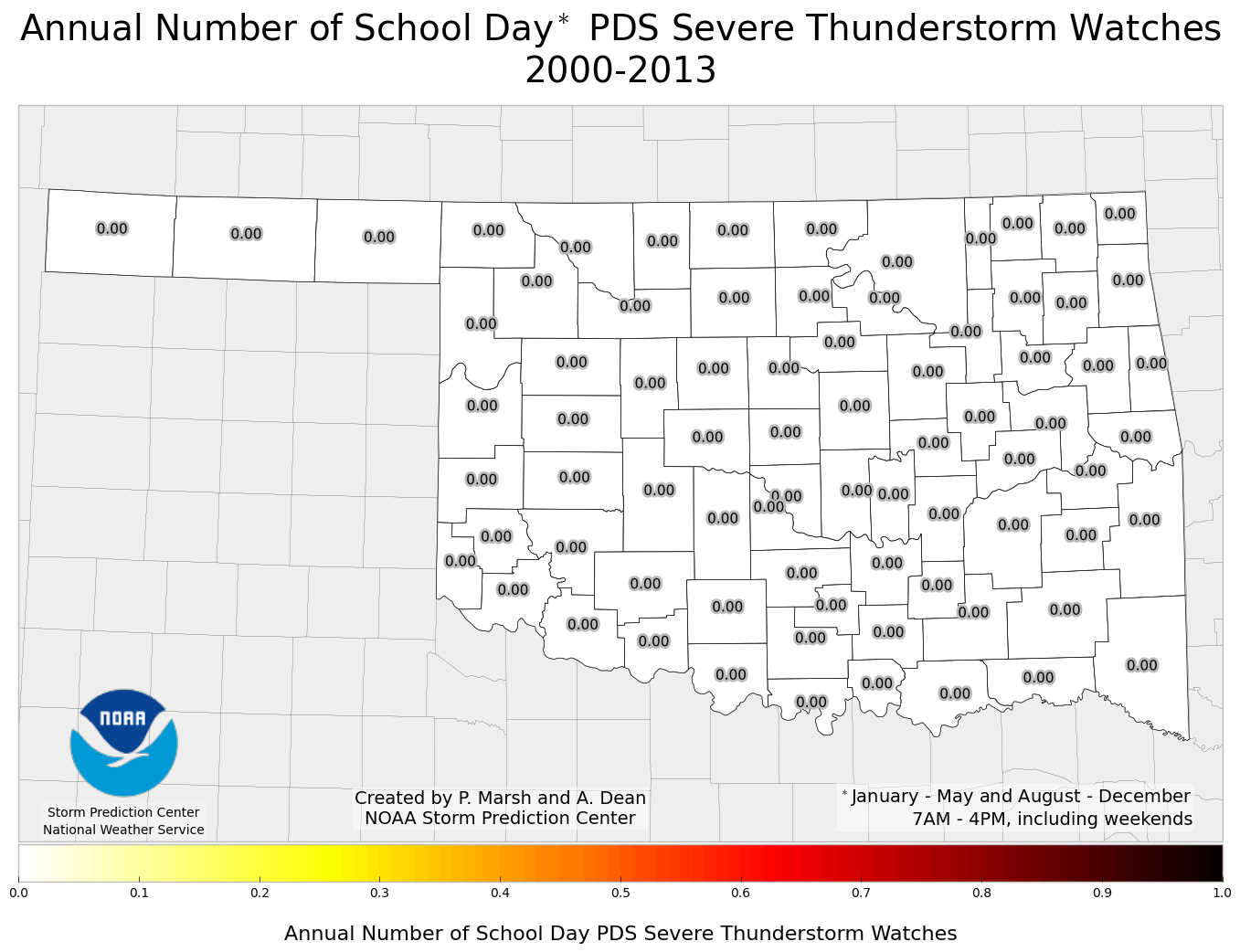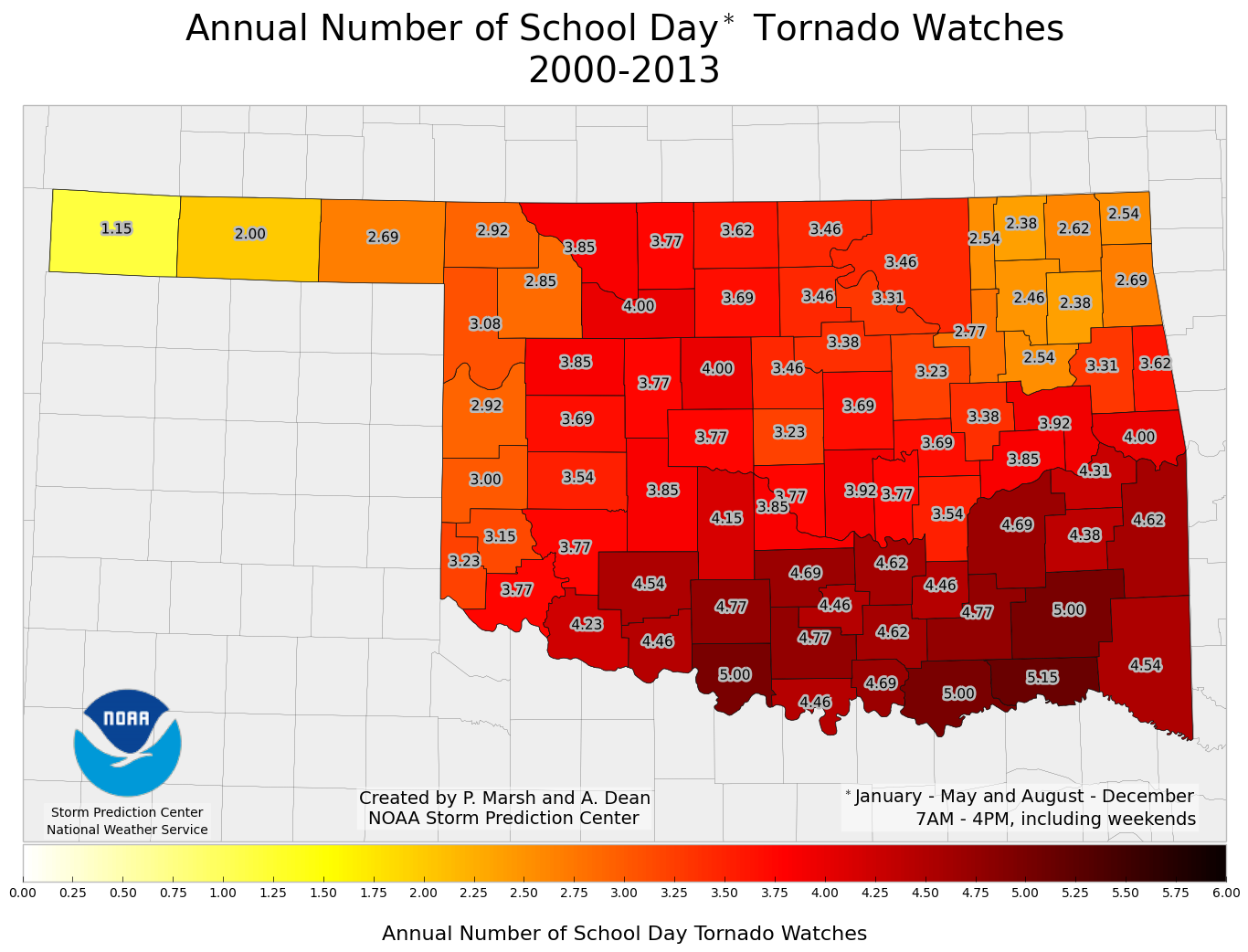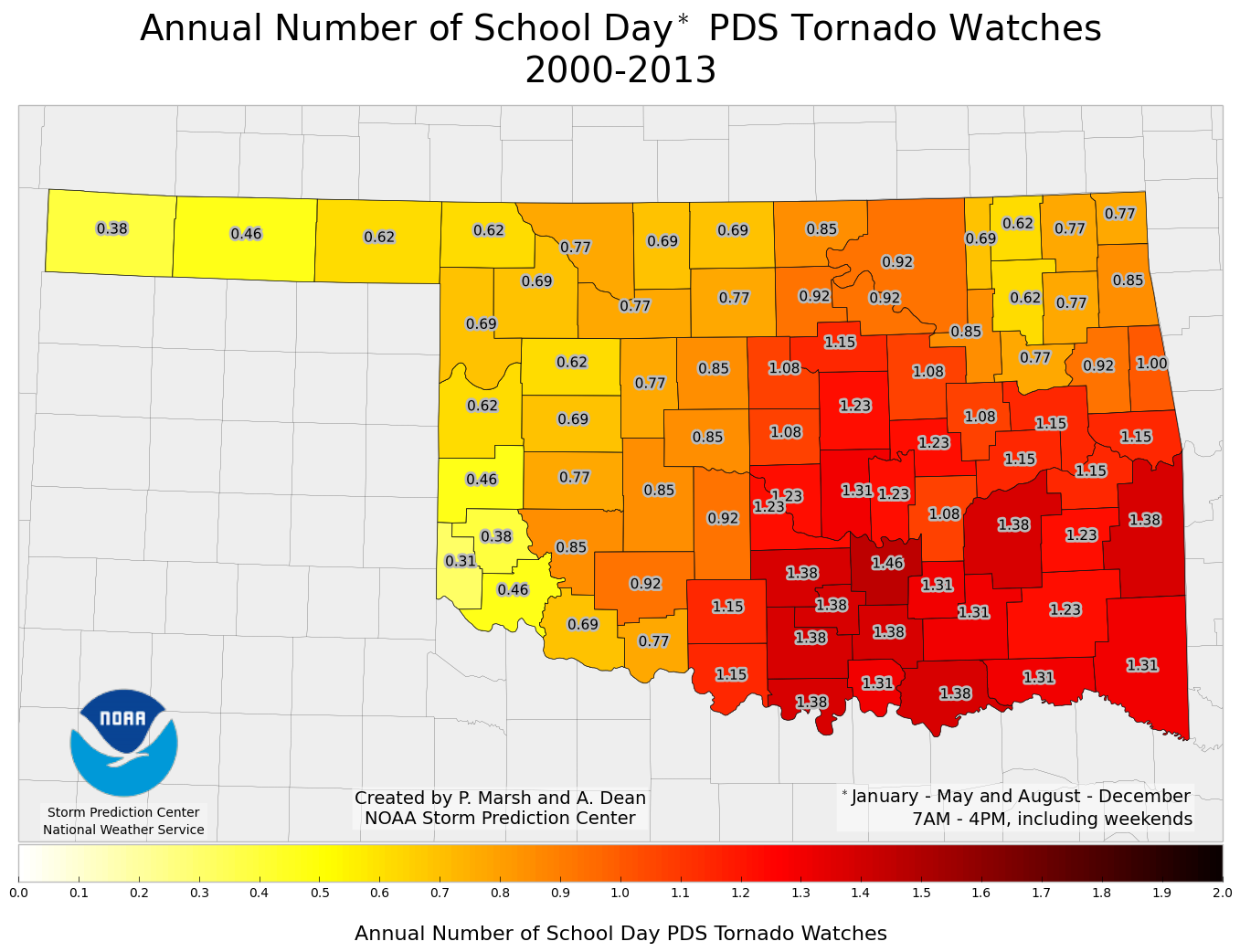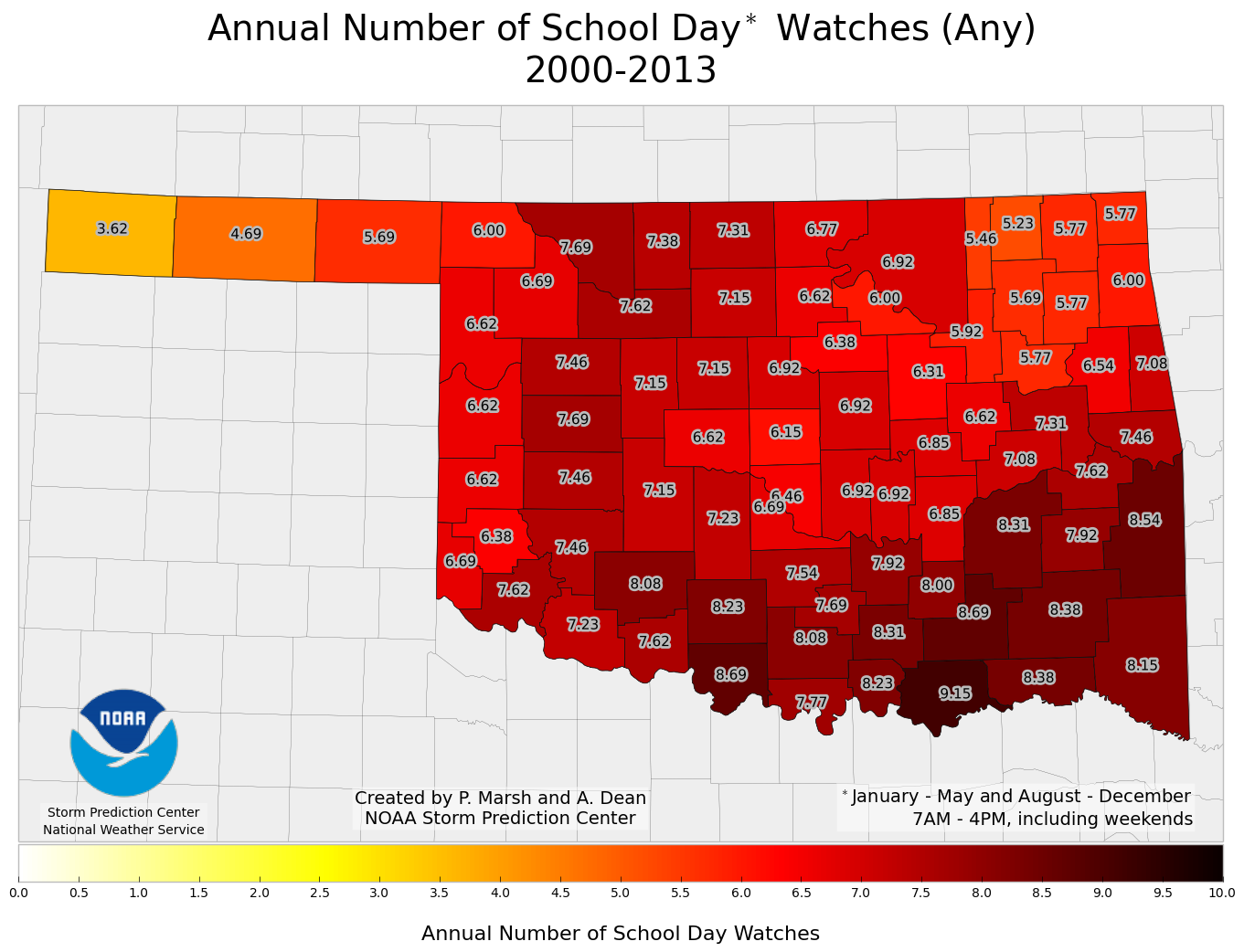With the school year either already begun, or about to begin, for much of Oklahoma, I thought I'd write a post about the Oklahoma School Year and severe weather. For these results, I've identified the school year as every day between the months of January through (and including) May as well as August through (and including) December. (Note, this means that I am including weekend days in this calculation.) Additionally, I am using the Storm Prediction Center's outlook data from January 2000 through the end of 2012.
Below is plot of the average annual number of school days (including weekends) in which each Oklahoma county was placed in a Storm Prediction Center Slight Risk (or a higher risk category). As you can see, this ranges anywhere from 17 days in the far western Oklahoma Panhandle to around 37 days in southeastern Oklahoma.
Next is a plot of the average annual number of school days (including weekends) in which each Oklahoma county was placed in a Storm Prediction Center Moderate Risk (or a higher risk category). As you can see, this ranges anywhere from about 1 day in the far western Oklahoma Panhandle to around 6 days in southeastern Oklahoma.
Next is a plot of the average annual number of school days (including weekends) in which each Oklahoma county was placed in a Storm Prediction Center High Risk. As you can see, this ranges anywhere from almost never in the far western Oklahoma Panhandle to around once every 2 years in northeastern Oklahoma.
Most of the spatial pattern comes from the annual cycle of the climatological probabilities of severe weather occurrence. What I mean by this is that during the "cool season" (late fall through early spring), the higher climatological probabilities of severe weather occurrence are in the southeastern United States. As spring begins, the climatological peak values begin to expand and increase into the southern plains. This means that southeast Oklahoma spends more time in the climatological peak during its school year, because the rest of Oklahoma spends time in its climatological peak when the school year has ended. This is especially true with the Oklahoma Panhandle, which doesn't see it's climatological peaks until very late May into late June.
Of note is that it is actually northeast Oklahoma that has a higher likelihood of experiencing a High Risk during the school year than anywhere else in the state. Based on my previous explanation, one might have thought that southeast Oklahoma would be the expectant maximum of High Risks. My guess is that this is due to the fact that High Risks are rare, and require a rare combination of ingredients coming together, as is evident by the relatively few times they are issued. One of these ingredients is an extremely strong, dynamical storm. When this is the case, for reasons I won't get into here (partly because I don't think meteorologists are completely sure), these storm systems tend to track a little bit farther north. This results in northern preference for high risks. Additionally, a lot of moisture is needed to help produce large amounts of instability. Given that the Gulf of Mexico is slightly east of our longitude, it's easier for moisture to return to eastern Oklahoma than western Oklahoma.
The previous charts might make it seem like Oklahoma school children are exposed to a lot of severe weather during the school day. However, this isn't necessarily the case. The outlooks cover time periods that extend past the bounds of the school day (7AM to 4PM for my purposes). Thus, it is possible that the severe weather might have occurred after school let out, or even before the school day began. To begin looking at that possibility, below are some maps of the number of watches issued during the school day, during the school year. This time I will be using SPC watches from January 2000 - the end of May 2013. (Once again, note that weekends are included in the analysis.)
Below is a plot of the average annual number of SPC Severe Thunderstorm Watches issued between 7AM and 4PM during the school year (weekends included). As you can see, this ranges from around 2.5 in the far western Oklahoma Panhandle to slightly more than 4 in southeast Oklahoma.
Below is a plot of the average annual number of SPC Particularly Dangerous Situation (PDS) Severe Thunderstorm Watches issued between 7AM and 4PM during the school year (weekends included). As you can see, this has not happened since 2000.
Below is a plot of the average annual number of SPC Tornado Watches issued between 7AM and 4PM during the school year (weekends included). As you can see, this ranges from around 1 in the far western Oklahoma Panhandle to slightly more than 5 in southeast Oklahoma.
Below is a plot of the average annual number of SPC Particularly Dangerous Situation (PDS) Tornado Watches issued between 7AM and 4PM during the school year (weekends included). As you can see, this ranges from around 0.3 (or once every three years) in the far western Oklahoma Panhandle to around 1.3 in southeast Oklahoma.
Taking a look in aggregate, below is a plot of the average annual number of SPC Watches of any kind issued between 7AM and 4PM during the school year (weekends included). As you can see, this ranges from around 3.5 in the far western Oklahoma Panhandle to slightly more than 9 in southeast Oklahoma.
Thus, even though the a large part of the state experiences on average around 30-40 days of severe weather during the school year, less than 10 of those events (on average) occur during the school day itself. With that said, it only takes one event to completely ruin a school year...and a community. The 20 May 2013 Moore, OK tornado is a pointed reminder of this fact.
